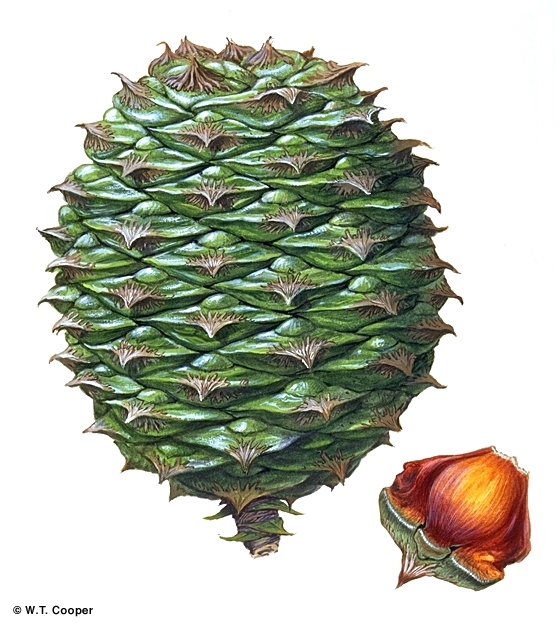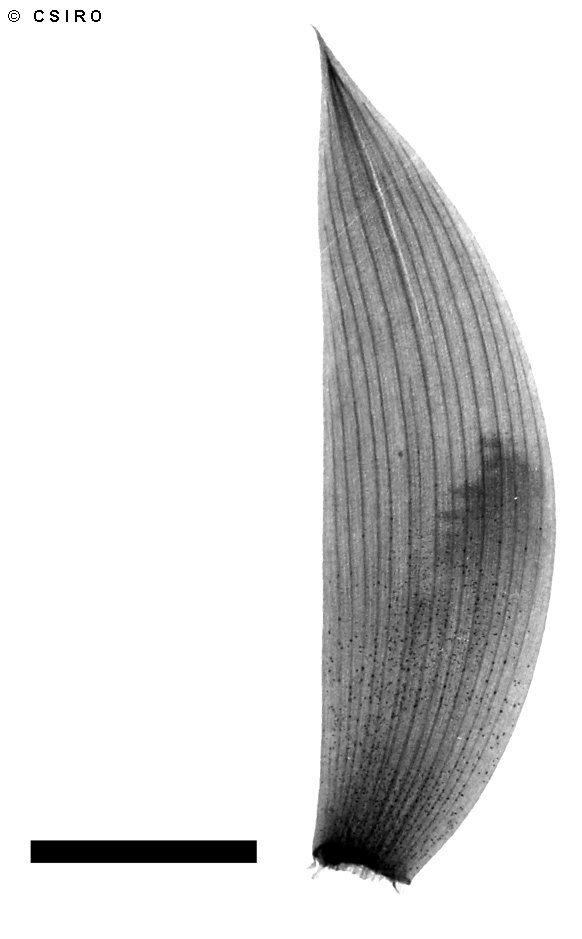Australian Tropical Rainforest Plants - Online edition
Araucaria bidwillii Hook.



Hooker, W.J. (1843) Hooker's London Journal of Botany 2: 503. Type: Mount Brisbane range of hills, 70 miles N.W. of Moreton Bay, Australia, J.T. Bidwill Esq.
Pine, Bunya; Bunya Pine; Bunya Bunya; Bunya-bunya; Monkey-puzzle Tree; Pine, Queensland; Queensland Pine; Bunya-bunya Pine; Bunya
Stem usually unbranched. Lateral branches arranged in whorls on the stem. Lateral branches +/- horizontal with leaves arranged in clusters on the extremities. Crown +/- dome-shaped.
Leaves sessile, base clasping the twig and tapering to a fine, sharp, hard point capable of penetrating the skin. Leaf blades about 5-35 mm long. Veins inconspicuous, fine and numerous, +/- parallel to the margins.
Male cones large, up to 20 cm long.
Cones up to 30 cm long. Seeds large, up to 5 cm long, easily separating from the cone scale.
Tap root thickened, carrot-like (Daucus carota). At the tenth leaf stage: leaves sessile, lanceolate with a needle-like tip at the apex, venation parallel. Seed germination time 100 days.
Endemic to Queensland, a rare and restricted species in NEQ being known only from the Mt Lewis and Cannabullen Falls areas, but more widespread in south-eastern Queensland. Altitudinal range in NEQ from 500-1200 m. In NEQ this species tends to occur in situations where luxuriant rain forest development is precluded by unfavourable soil or substrate conditions.
Although there is abundant evidence that this species was a significant food source for the aboriginals in Southern Queensland, there is no evidence of this nature in North Queensland. Indeed, the man who discovered this species in North Queensland, Forest Ranger Lade, was astute enough to examine aboriginal camp sites in the Mt. Lewis area and could not find any evidence of aboriginal use. However, in view of the scarcity of the species, his lack of success is not surprising. The timber of this species has had a wide range of uses and is more or less comparable to A. cunninghamii.
Wood specific gravity 0.53. Cause et al. (1989).





